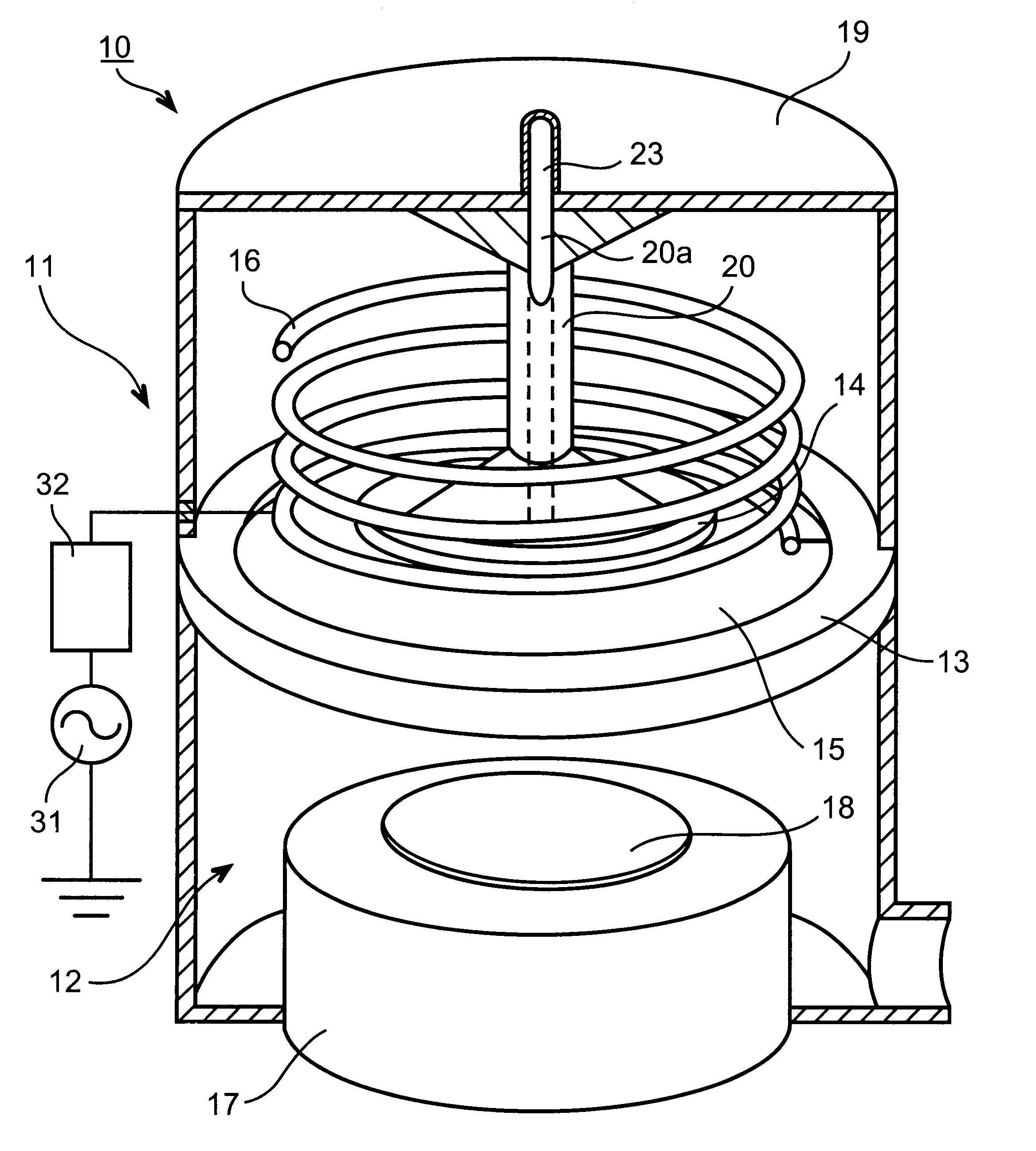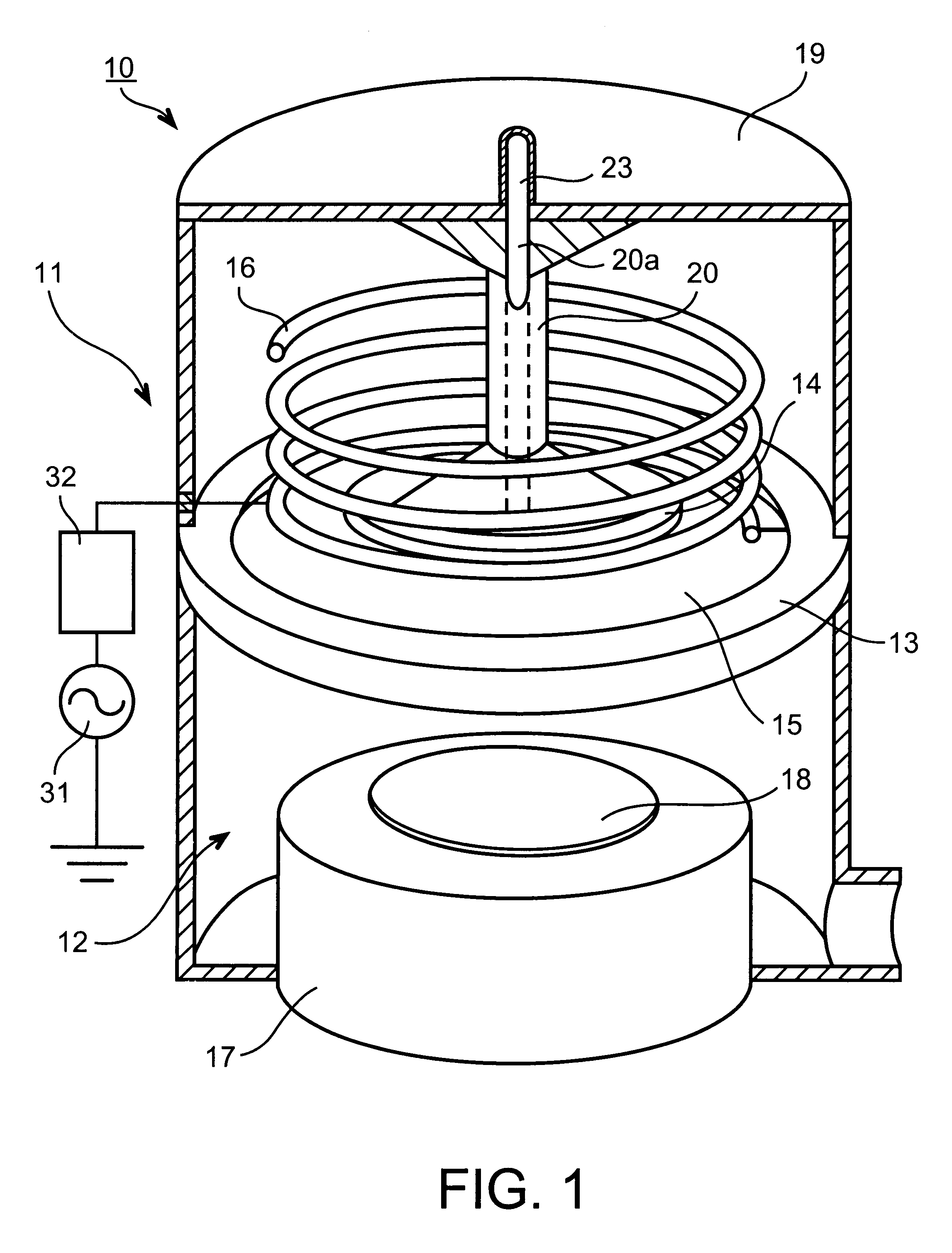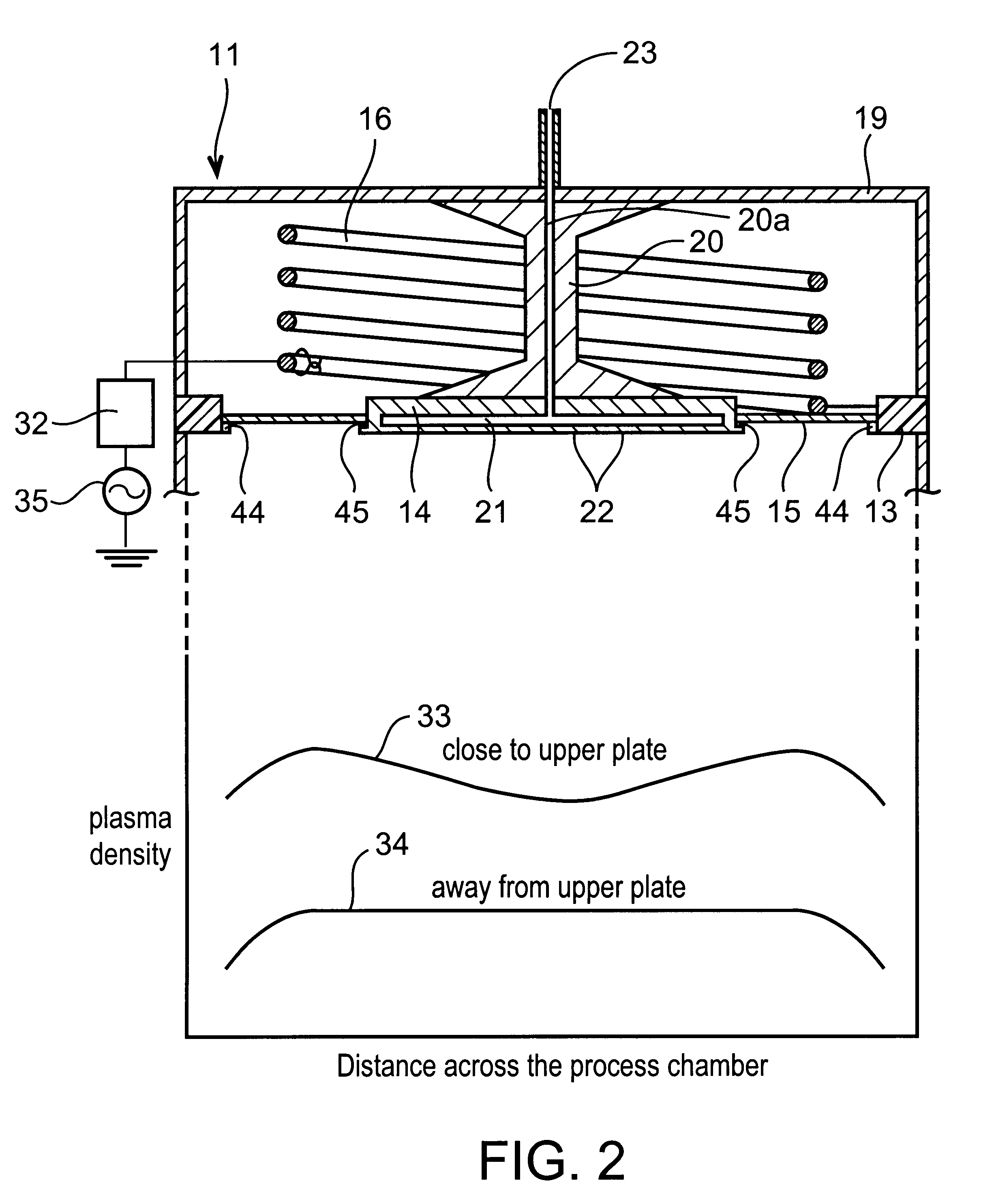Plasma processing system
a processing system and plasma technology, applied in the field of plasma processing system, can solve the problems of inability to achieve radially uniform plasma with the above helical resonator plasma source, inability to solve the above problem,
- Summary
- Abstract
- Description
- Claims
- Application Information
AI Technical Summary
Benefits of technology
Problems solved by technology
Method used
Image
Examples
working example 2
A working example 2 will be explained in accordance with FIG. 3, where only the resonator section is shown. In FIG. 3, components which are substantially identical to the components explained in the working example 1 are respectively designated with the same reference numerals. The resonator 11 and the process chamber 12 in the working example 2 are the same as given in the working example 1 in the view of the hardware configuration. The only difference is that the rf power source 31 with a constant operating frequency used in the working example 1 is replaced by a variable frequency rf power source 35 and the matching circuit 32 is eliminated. The variable frequency range around a frequency selected in the variable frequency rf power source 35 may usually be in the range of .+-.10 MHZ. The selected frequency usually is in the range of 1-40 MHz, typically being selected as 13.56 MHZ. Other properties of the rf power source are the same as that explained in the working example 1. Use...
working example 3
A working example 3 will be explained in accordance with FIG. 4, where only the resonator section is shown. FIG. 4 shows a schematic view of the working example 3. In FIG. 4 components which are substantially identical to the components explained in the working example 1 are respectively designated with the same reference numerals. In the working example 3, the top plate 19 is placed on a dielectric ring 36 in order to set the central metal plate 14 in a floating state, which is electrically connected to the top plate 19. Except for the addition of this dielectric ring 36 the configuration of the resonator 11 is almost the same as the working examples 1 and 2. However, in order to prevent the propagation of electromagnetic radiation to the outside, a metal case 37 is attached to cover the upper section of the resonator. The rf electrical power to the helical coil 16 may come from the rf power source 31 given in the working example 1, or the variable frequency rf power source 35 give...
working example 4
Working example 4 will be explained in accordance with FIG. 5 where only the resonator section is shown. FIG. 5 shows a schematic view of the working example 4. The working example 4 is an extension of the working example 3. In FIG. 5, components which are substantially identical to the components explained in the working example 3 are respectively designated with the same reference numerals. In the working example 4, an L-C circuit 38 is electrically connected to the top plate 19, which in turn is electrically connected to the central metal plate 14. Usually the L-C circuit 38 is comprised of an inductor 39 and a variable capacitor 40 which are connected in series, so that the resonance frequency of the L-C circuit 38 can be changed to be equal to the frequency of the rf power applied to the helical coil 16. When the resonance frequency of the L-C circuit 38 is equal to the frequency of applied rf power, an rf current flows through the central metal plate 14 to the ground. Further,...
PUM
| Property | Measurement | Unit |
|---|---|---|
| constant frequency | aaaaa | aaaaa |
| pressure | aaaaa | aaaaa |
| impedance | aaaaa | aaaaa |
Abstract
Description
Claims
Application Information
 Login to View More
Login to View More - R&D
- Intellectual Property
- Life Sciences
- Materials
- Tech Scout
- Unparalleled Data Quality
- Higher Quality Content
- 60% Fewer Hallucinations
Browse by: Latest US Patents, China's latest patents, Technical Efficacy Thesaurus, Application Domain, Technology Topic, Popular Technical Reports.
© 2025 PatSnap. All rights reserved.Legal|Privacy policy|Modern Slavery Act Transparency Statement|Sitemap|About US| Contact US: help@patsnap.com



